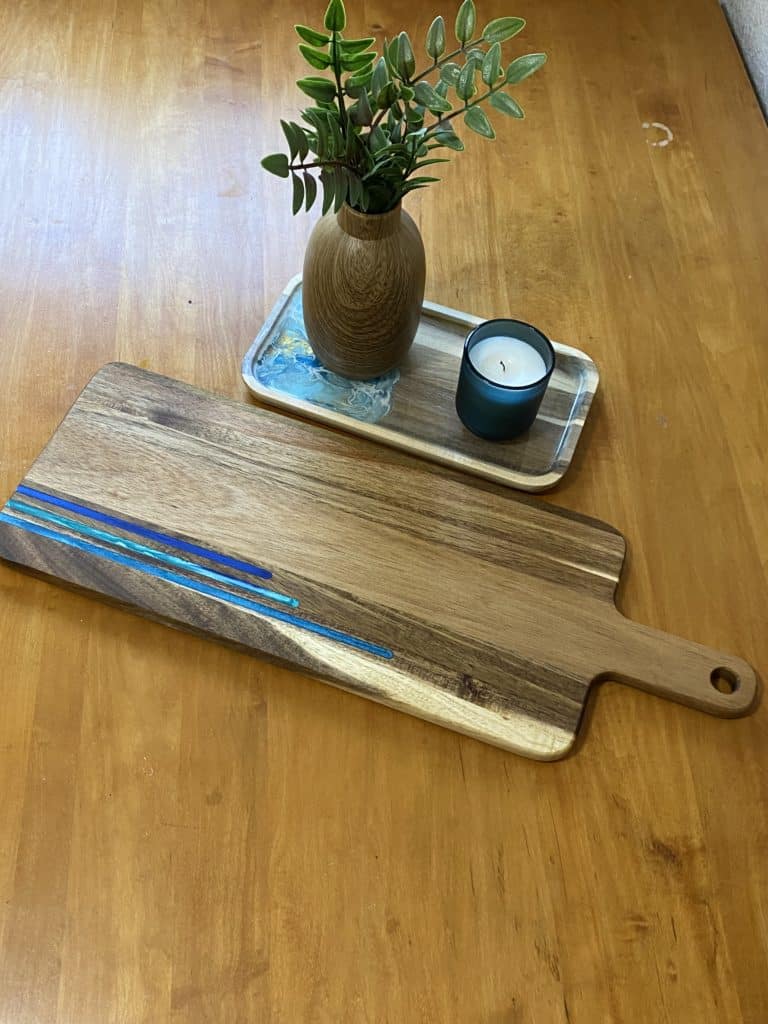From Charcuterie Board to Butter Board:
A Delicious Journey on a Board
When it comes to hosting a party full of culinary delights, there's something undeniably captivating for your guests about a beautifully arranged charcuterie board. Its assortment of cured meats, cheeses, fruits, and spreads has become a favorite for many party planners.
But have you ever considered the idea of a butter board? A unique twist on the traditional charcuterie concept, a butter board celebrates the rich and creamy goodness of butter.
Today we will explore six similarities and differences between a charcuterie board and a butter board, and we'll provide you with a mouthwatering list of ingredients to create your own delectable butter board.
1. The Art of Presentation:
A charcuterie board is all about artful presentation, with an emphasis on colors, textures, and shapes. Similarly, a butter board relies on aesthetics to captivate your guests. Start with a beautiful wooden or marble board and arrange your ingredients with care. Focus on varying shades of butter, contrasting flavors, and an assortment of accouterments that will complement the creamy centerpiece.
2. The Main Star:
While a charcuterie board showcases an array of cured meats, the butter board takes the spotlight with different types of butter. Experiment with salted, unsalted, cultured, or flavored butter. Include both store-bought and homemade varieties for a diverse experience. Don't shy away from infusing your own butter with herbs, spices, or even citrus zest to add a burst of flavor.
3. Accompaniments:
Just as a charcuterie board features accompaniments like fruits, nuts, and olives, a butter board thrives on complementary elements. These elements include a selection of bread and crackers, both plain and with various grains and flavors. Freshly sliced fruits like apples, pears, or berries add a touch of sweetness. Chutneys, honey, or fruit preserves are wonderful additions to enhance the butter's flavors. Also, adding a sprinkle of sea salt or a drizzle of balsamic glaze is a good idea to entice and entertain the taste buds.
4. Cheese, Please!
While cheese is a staple on a charcuterie board, it can also find its place on a butter board. Select a few cheeses that pair well with butter, such as creamy brie, tangy goat cheese, or aged cheddar. Cheese and butter together create a delightful combination of flavors and textures, adding depth to your butter board experience.
5. Fresh Herbs and Spices:
A charcuterie board often incorporates fresh herbs like rosemary or thyme for added aromatic appeal. Similarly, fresh herbs can play a vital role on a butter board. Sprinkle chopped chives, dill, or parsley over different butter spreads to infuse them with a burst of freshness. Experiment with spices like smoked paprika, cayenne pepper, or truffle salt to create unique and savory butter creations.
6. Sweet Treats:
Last but not least is the dessert charcuterie which can be full of dried fruits, dark chocolate, and cheese that pairs well with these flavor combos. Some cheeses that pair well with dark chocolate are Brie, blue, and goat cheese. In comparison for a dessert butter board, you can use salted butter infused with brown sugar and vanilla or flavored cream cheese as your base and add flowers to compliment such as almonds, walnuts shaved dark chocolate and so much more.
Some Ingredients ideas for Your Butter Board:
- Assorted butter varieties: salted, unsalted, cultured, flavored (garlic, herb, truffle, etc.)
- Sliced baguette, sourdough, and a variety of crackers
- Freshly sliced fruits: apples, pears, berries
- Assorted cheeses: brie, goat cheese, aged cheddar
- Chutneys, jams, or honey
- Sea salt, truffle salt, or flavored salts
- Fresh herbs: chives, dill, parsley
- Spices: smoked paprika, cayenne pepper, truffle oil
- Dark chocolate
- Nuts, raw, roasted, or salted
- Flavored cream cheese
Some Charcuterie and Butter boards to choose from:


As we've explored the world of butter boards and discovered their striking similarities to the beloved charcuterie board, we have given you enough flavor combinations and ideas to create your own masterpiece. You choose and explore your inner artist by creating an artful presentation to entertain your guests.
Watch my short tutorial here about creating a quick and easy cream cheese dessert butter board.
*This post contains affiliate links in which I have I have received payment to include. This does not mean I endorse their products.
